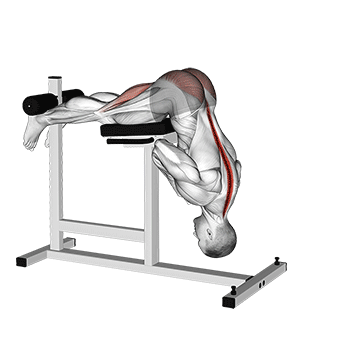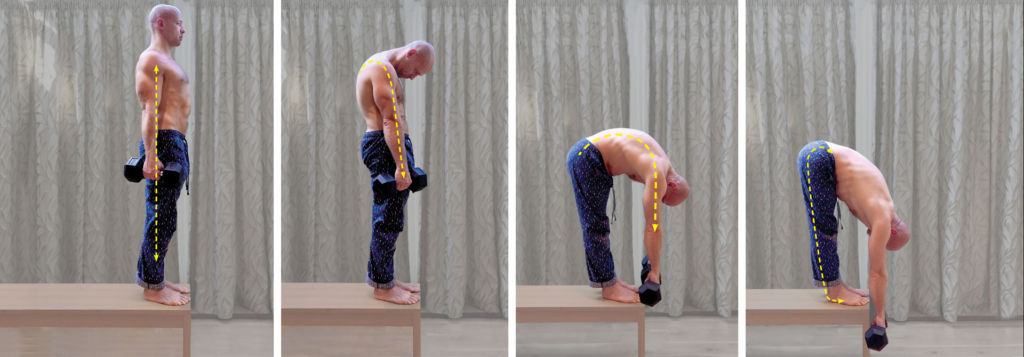5+ Hours of Sitting Daily? Your Lower Back is Screaming for These 3 Stretches
The muscles in your lower back don’t get enough love. Here are some of the exercises you might be missing.
It’s easy to overlook the muscles in our lower back. While the biceps and abs are visible and palpable, lower back muscles remain out of sight and out of mind, until discomfort arises, mistakenly attributed to spinal issues.
In reality, these robust muscles play a pivotal role in our daily activities and deserve focused attention.
Our lower back muscles can often be weak for several reasons, many of which stem from our modern lifestyles and daily habits:
Why do many people experience lower back weakness?
1. Sedentary Lifestyle
Many people spend a large portion of their day sitting—at work, during commutes, or at home. Prolonged sitting can lead to muscle atrophy and weakness because it doesn’t engage the lower back muscles actively. This lack of movement reduces the strength and endurance of these muscles over time.
2. Poor Posture
Sitting or standing with poor posture can strain the lower back muscles. Slouching or leaning forward disrupts the natural curve of the spine, putting additional pressure on the lower back. This habitual misalignment can lead to muscle fatigue and weakness as the muscles are not being used efficiently or are being overstressed.
3. Inadequate Exercise
A lack of targeted exercise that strengthens the back can result in weak lower back muscles. Many popular workout routines focus more on the front of the body, like the abs and chest, neglecting the back. Without regular strengthening exercises, the lower back muscles can’t develop properly, leading to an imbalance in muscle strength.
4. Aging
As we age, our muscle mass naturally decreases. This process, known as sarcopenia, can affect all muscles in the body, including those in the lower back. Without regular exercise to counteract this decline, the muscles can weaken significantly over time.
5. Injury and Overuse
Previous injuries to the lower back can lead to chronic pain and weakness if not properly rehabilitated. Additionally, overusing the back muscles, either through repetitive motion or by engaging in strenuous activities without proper strength, can lead to muscle strains and ongoing weakness.
6. Imbalances in Muscle Strength
An imbalance in the muscle strength around the spine and core can lead to lower back weakness. For example, if the abdominal muscles are much stronger than the back muscles, it can pull the spine out of alignment and place extra stress on the lower back.
7. Stress
Psychological stress can also manifest as physical tension in the body, particularly in the back. Chronic stress can cause the back muscles to contract and tighten, leading to fatigue and weakness over time.
Understanding Your Lower Back Muscles
Central to the lower back is the erector spinae or spinal erectors, a group of muscles that run alongside the spine. These muscles are vital for maintaining posture and are actively engaged in movements where the spine extends or tilts. For example, when you perform a deadlift, it is the spinal erectors that work against the load to keep the spine aligned.
What movements engage the lower back? When you arch (extend) your back, you’re using these muscles. Conversely, rounding (flexing) the back primarily engages the abdominal muscles, not the lower back.
Essential Lower Back Exercises
These exercises focus on strengthening the lower back, enhancing posture, and preventing injuries.
For Beginners: Bird Dogs
Bird dogs are an excellent starting point for building lower back strength. This exercise involves balancing on hands and knees while extending opposite limbs, promoting stability and core strength.
- Start on all fours, ensuring your hands are directly under your shoulders and knees under your hips.
- Extend one arm and the opposite leg simultaneously, keeping your back flat.
- Hold the position for a few seconds before switching to the other arm and leg.
For those finding this too challenging or too easy, modifications and advancements, such as adding weights, are available to suit different fitness levels.
In the Gym: Back Extensions

Back extensions are a staple in gym routines for targeting the lower back.
- Position yourself on the back extension bench, securing your feet under the footpads.
- With a straight back, hinge forward at the hips and then raise your torso back to the starting position.
This exercise can be performed with or without added weights and is crucial for developing the lower back safely.
Advanced Technique: Reverse Hypers

Reverse hypers, a favorite in powerlifting circles, focus intensely on the lower back.
- Use the reverse hyper machine, lying face down and hooking your legs securely.
- Lift your legs using your lower back and glutes, then lower them back down.
This movement not only strengthens the back but also aids in spinal decompression, popularized by its therapeutic benefits post-injury.
Lesser-Known Exercise: Jefferson Curls

Jefferson curls are the secret weapon for an advanced lower back workout.
- Stand on a raised platform with a weight in hand.
- Slowly round your back and lower the weight towards the floor, then carefully roll back up, vertebra by vertebra.
Though initially controversial, when performed correctly and progressively, Jefferson curls can enhance spinal flexibility and strength.
Conclusion
Strengthening the lower back is crucial for overall fitness and health, helping to enhance performance in various physical activities and daily tasks. By incorporating these exercises into your routine, you ensure a well-rounded approach to fitness that supports a strong, resilient back. Practice these movements with attention to form and progress gradually to reap the best results.
Related posts:
 Average Weight for 2-Year-Old Boys and Girls
Average Weight for 2-Year-Old Boys and Girls
 Why Your Belly Hangs During Planking Exercises?
Why Your Belly Hangs During Planking Exercises?
 Fitness Reading/Listening For The Week : ‘End the Insomnia Struggle: A Step-by-Step Guide to Help You Get to Sleep and Stay Asleep ‘ (by Colleen Ehrnstrom PhD & Alisha L. Brosse PhD)
Fitness Reading/Listening For The Week : ‘End the Insomnia Struggle: A Step-by-Step Guide to Help You Get to Sleep and Stay Asleep ‘ (by Colleen Ehrnstrom PhD & Alisha L. Brosse PhD)
